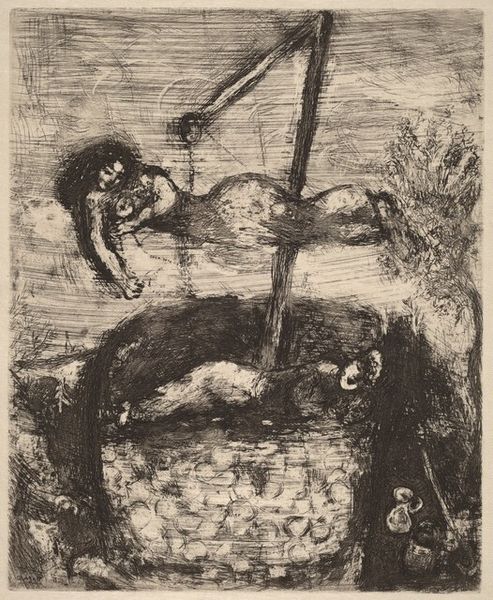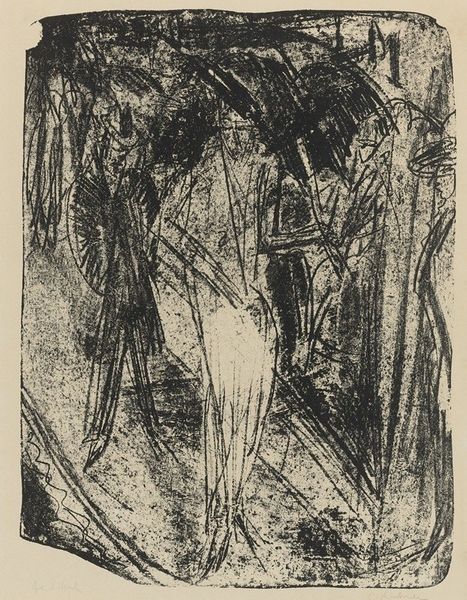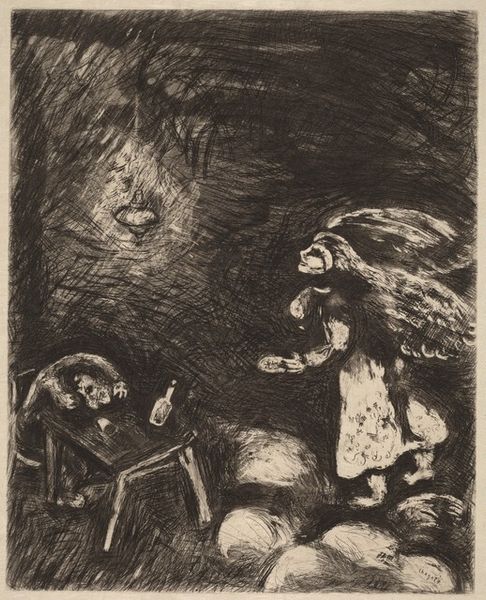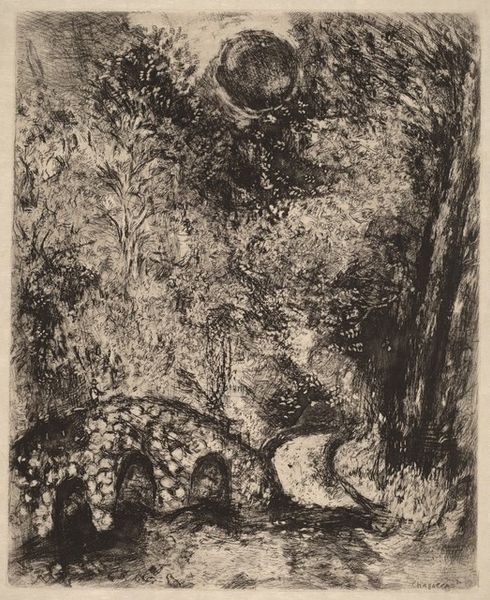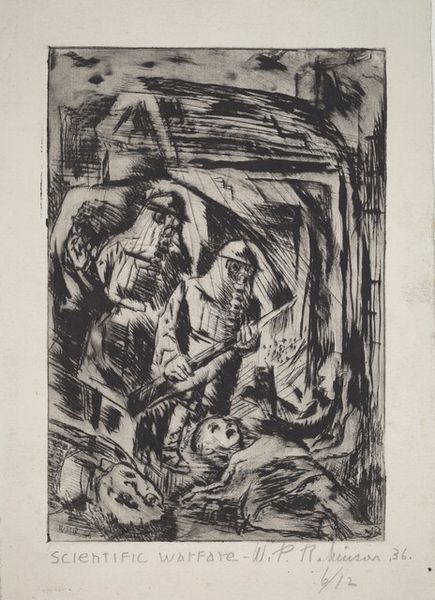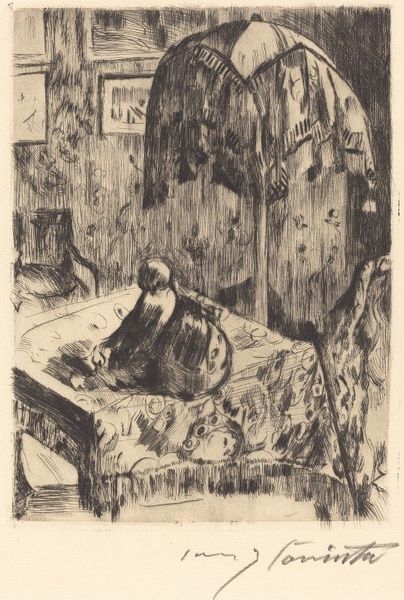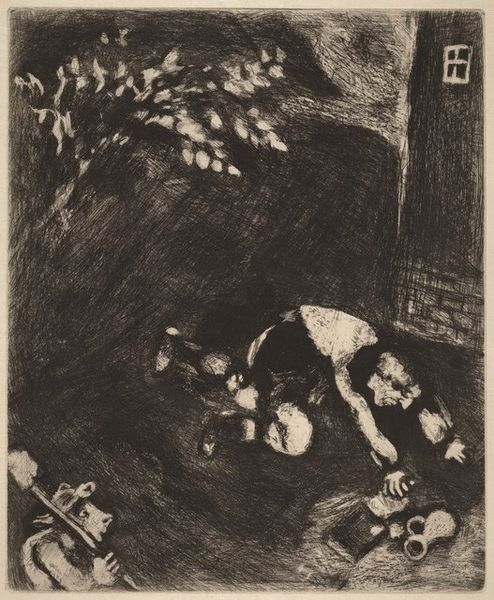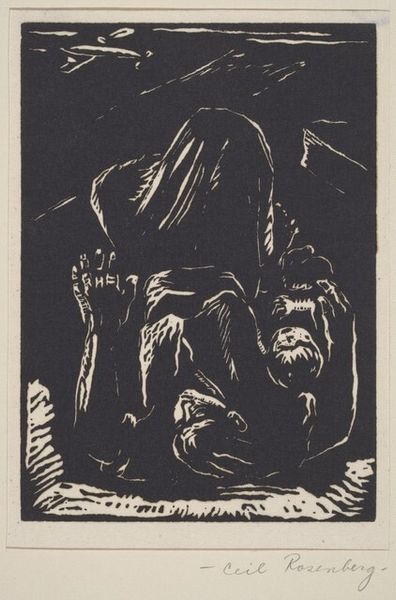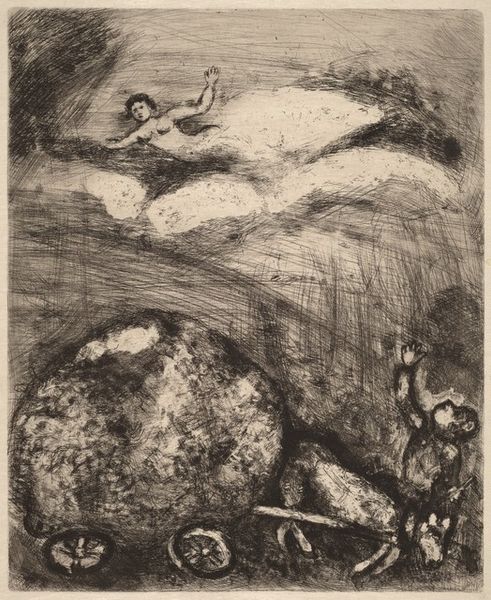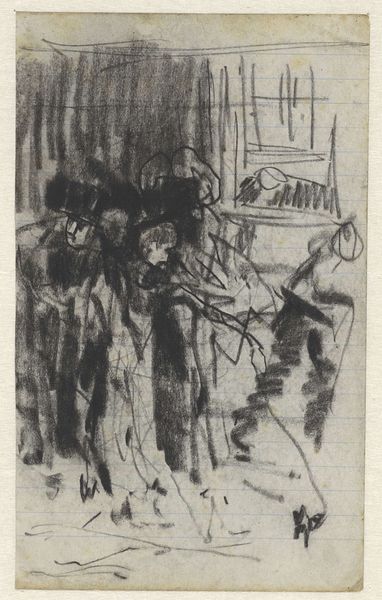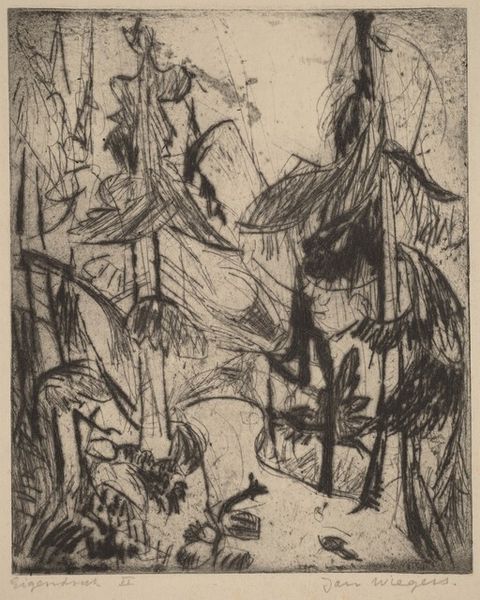
drawing, print, etching, ink
#
drawing
#
ink drawing
#
narrative-art
# print
#
etching
#
landscape
#
figuration
#
ink
Copyright: National Gallery of Art: CC0 1.0
Curator: Before us, we have Marc Chagall’s “The Hare and the Frogs,” an etching and ink drawing created between 1927 and 1930. Editor: My initial response is a feeling of frenetic energy, look at that hare bursting across the scene. The dark lines almost vibrate against the lighter background. Curator: It is quite evocative! This work comes from a series of etchings Chagall made illustrating La Fontaine's Fables. Examining these fables within the broader socio-political context of Europe between the wars, we begin to understand how prevalent themes of social inequality and political turmoil were. Editor: Absolutely, the choice to depict this particular fable can be read as a commentary on class dynamics and existential dread. The hare, representing a privileged class, seeks solace from their fears, only to realize the absurdity of their anxieties when encountering the even more vulnerable frogs. What does this mean when we are moving toward another world war? Curator: Chagall consistently used animals as allegorical devices to discuss complex human conditions. You know that many artists were committed to examining the political systems and powers as the political situation worsened. The bold lines of this ink drawing are characteristic of expressionist printmaking practices during that time. Editor: Right, there's a real visual language to this anxiety. Also, I notice how the landscape almost overwhelms the hare, its figure seems precarious amidst the thicket of lines. Could it symbolize the precarity and the political uncertainty people experienced during this period? Curator: I agree. Furthermore, the art world witnessed increasing polarization, where certain forms of art were legitimized by the institutional support, and the rise of political conservativism certainly shaped what artists created. This piece can prompt a wider dialogue about the cultural and social backdrop of its creation. Editor: Examining how an artwork reflects its context while retaining relevance for modern audiences allows for a richer appreciation. I can’t help but wonder how differently the image is seen now. Curator: It makes one think about resilience, and how recurring social hierarchies of fear influence modern society and governance. Editor: Definitely. It's like a mirror reflecting back the endless loop of anxieties that haunt society today. Thank you.
Comments
No comments
Be the first to comment and join the conversation on the ultimate creative platform.
